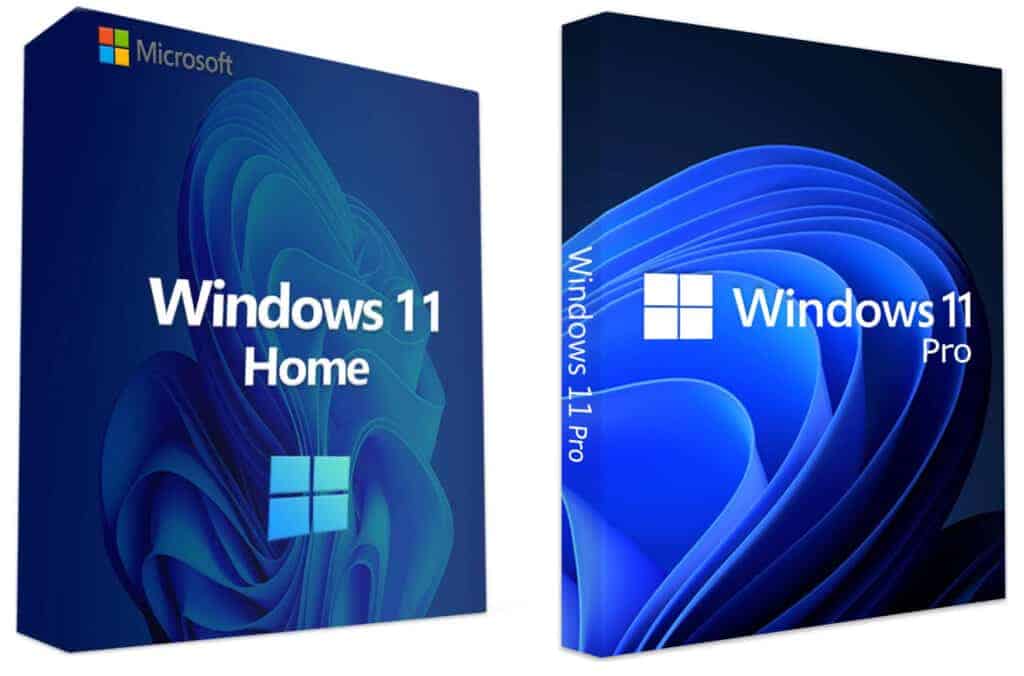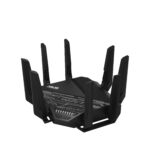Windows 11 users often face various issues that can disrupt their computing experience. These problems range from minor annoyances to major system failures. To fix Windows 11 problems, users can employ built-in troubleshooting tools, perform system repairs, or seek advanced solutions depending on the specific issue.
Microsoft provides several troubleshooting features within Windows 11 to address common problems. Users can access these tools through the Settings app, which offers options to diagnose and repair issues related to network connectivity, audio, and more. For more complex problems, Windows 11 includes a Startup Repair tool that can fix boot-related issues.
When built-in tools fail to resolve the problem, users may need to consider more advanced solutions. These can include updating drivers, performing a clean boot, or even resetting the operating system. In some cases, hardware compatibility issues may require updating device firmware or replacing incompatible components.
Troubleshooting Windows 11 Issues
Windows 11, while a significant upgrade, can sometimes encounter hiccups. But before you hit the panic button, here’s a guide to common problems and their solutions:
1. Update Woes
Windows Updates can sometimes get stuck or cause issues.
- Run the Troubleshooter: Windows has a built-in troubleshooter for updates. Go to Settings > System > Troubleshoot > Other troubleshooters > Windows Update.
- Pause Updates: If updates are causing problems, you can temporarily pause them. Go to Settings > Windows Update > Advanced options and select a pause duration.
- Manually Check for Updates: Sometimes, manually triggering an update can resolve issues. Go to Settings > Windows Update > Check for updates.
2. Slow Performance
Is your Windows 11 PC feeling sluggish?
- Disk Cleanup: Free up disk space by deleting temporary files and unnecessary programs. Search for Disk Cleanup in the Start menu.
- Storage Sense: Enable Storage Sense to automatically delete temporary files and manage storage. Go to Settings > System > Storage.
- Uninstall Unused Apps: Remove applications you no longer use to free up resources. Go to Settings > Apps > Apps & features.
- Disable Startup Apps: Prevent unnecessary apps from launching at startup. Go to Settings > Apps > Startup.
3. Start Menu or Taskbar Glitches
The Start menu and taskbar are central to Windows 11, but they can sometimes act up.
- Restart Windows Explorer: This often fixes temporary glitches. Press Ctrl + Shift + Esc to open Task Manager, find Windows Explorer, and click Restart.
- Check for Updates: Make sure Windows is up to date, as updates often include fixes for Start menu and taskbar issues.
- Run System File Checker: Use the System File Checker (SFC) tool to scan for and repair corrupted system files. Open a command prompt as administrator and run
sfc /scannow.
4. Driver Problems
Outdated or incompatible drivers can cause various issues.
- Update Drivers: Go to Settings > Windows Update > Advanced options > Optional updates to check for driver updates.
- Device Manager: Use Device Manager to update or roll back drivers for specific devices. Search for Device Manager in the Start menu.
5. Blue Screen of Death (BSOD)
BSOD errors indicate a critical system crash.
- Update Drivers: Ensure all drivers are up to date, especially graphics drivers.
- Check for Hardware Issues: BSODs can be caused by faulty RAM, hard drives, or other hardware. Run memory diagnostics and check hard drive health.
- System Restore: If the BSOD started recently, try restoring your system to a previous point.
6. Network Connectivity Issues
Having trouble connecting to the internet?
- Troubleshoot Network Connections: Windows has a built-in troubleshooter for network problems. Go to Settings > Network & internet > Status > Network troubleshooter.
- Restart Network Devices: Restart your modem, router, and PC to refresh the network connection.
- Check Network Drivers: Ensure your network adapter drivers are up to date.
7. General Troubleshooting Tips
- System Restore: Revert your system to a previous state if problems started recently.
- Reset This PC: This option reinstalls Windows while keeping your personal files. Go to Settings > System > Recovery > Reset this PC.
- Create a Bootable USB: Have a bootable Windows 11 USB drive handy for troubleshooting and reinstalling Windows if needed.
| Problem | Possible Solutions |
|---|---|
| Update issues | Troubleshooter, pause updates, manual update |
| Slow performance | Disk Cleanup, Storage Sense, uninstall apps, disable startup apps |
| Start menu/taskbar glitches | Restart Windows Explorer, updates, System File Checker |
| Driver problems | Update drivers, Device Manager |
| BSOD | Update drivers, check hardware, System Restore |
| Network issues | Troubleshooter, restart network devices, check drivers |
| General troubleshooting | System Restore, Reset this PC, bootable USB |
Key Takeaways
- Windows 11 offers built-in troubleshooting tools for common issues
- Advanced problems may require system repairs or reinstallation
- Hardware compatibility can cause persistent issues in Windows 11
Analyzing and Troubleshooting Common Windows 11 Issues
Windows 11 users can encounter various issues, but Microsoft provides tools and methods to diagnose and resolve them. These approaches range from automated troubleshooters to command-line utilities that can repair system files and update components.
Using Built-in Troubleshooters for Targeted Fixes
Windows 11 includes several built-in troubleshooters designed to address specific problems. Users can access these tools through the Settings app under System > Troubleshoot > Other troubleshooters.
Common troubleshooters include:
- Internet Connections
- Windows Update
- Blue Screen
- Audio
- Printer
To use a troubleshooter:
- Open Settings
- Navigate to System > Troubleshoot > Other troubleshooters
- Find the relevant troubleshooter
- Click “Run” next to it
These automated tools can often identify and fix issues without user intervention. They provide a quick first step in resolving many Windows 11 problems.
Restoring System Health with SFC and DISM Commands
For more stubborn issues, the System File Checker (SFC) and Deployment Image Servicing and Management (DISM) tools can help. These command-line utilities repair corrupted system files and the Windows image.
To use SFC:
- Open Command Prompt as administrator
- Type “sfc /scannow” and press Enter
- Wait for the process to complete
If SFC doesn’t resolve the issue, try DISM:
- In Command Prompt (admin), type:
“DISM /Online /Cleanup-Image /RestoreHealth” - Press Enter and wait for completion
These tools can fix problems that troubleshooters can’t address, often resolving stability issues and errors.
Managing System Updates and Rollbacks
Windows Update plays a crucial role in maintaining system health. However, sometimes updates can cause problems. Users should:
- Check for updates regularly
- Install available updates promptly
- Restart the system after updates
If an update causes issues, users can:
- Use System Restore to revert to a previous state
- Uninstall recent updates through Settings > Windows Update > Update history
For severe problems, creating a Windows 11 installation media can help with repairs or clean installations. This process involves downloading the Media Creation Tool from Microsoft’s website and following the prompts to create a bootable USB drive.
Resolving Hardware and Software Compatibility Matters
Windows 11 introduces stricter hardware requirements and potential software conflicts. Users may encounter issues with TPM, Secure Boot, peripherals, and third-party applications.
Ensuring Compatibility with TPM 2.0 and Secure Boot
Windows 11 requires TPM 2.0 and Secure Boot for installation. To check TPM status, users can press Windows key + R, type “tpm.msc”, and press Enter. If TPM is not detected, updating the BIOS may help.
For Secure Boot, restart the PC and enter BIOS settings. Look for a Secure Boot option and enable it. Some older systems may need to switch from Legacy to UEFI boot mode.
The PC Health Check App can verify if a system meets Windows 11 requirements. If hardware upgrades are needed, consulting the PC manufacturer is advisable.
Fixing Problems with Peripherals and Bluetooth Devices
Peripheral issues often stem from outdated drivers. To update drivers, open Device Manager, right-click the problematic device, and select “Update driver”.
For Bluetooth problems:
- Ensure Bluetooth is turned on in Settings
- Remove the device and re-pair it
- Update Bluetooth drivers
- Run the Bluetooth troubleshooter in Settings
If printers aren’t working, try removing and reinstalling them. Sometimes, downloading the latest drivers from the manufacturer’s website solves compatibility issues.
Addressing Issues with Third-Party Software and Services
Some third-party software may not be fully compatible with Windows 11. To troubleshoot:
- Update the software to the latest version
- Check the developer’s website for Windows 11 compatibility information
- Run the program in compatibility mode
For antivirus conflicts, temporarily disable the third-party antivirus and see if the issue resolves. If so, consider switching to Windows Defender or finding a more compatible antivirus solution.
Running the compatibility troubleshooter can help with stubborn applications. Right-click the program, select Properties, then the Compatibility tab, and click “Run compatibility troubleshooter”.







